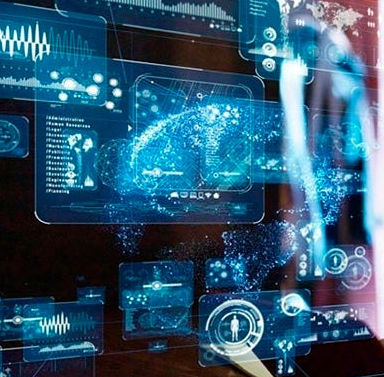In the rapidly growing world of artificial intelligence (AI), the spotlight has largely been on the development of larger, more sophisticated models. But a crucial element of AI’s future is quietly simmering beneath the surface: hardware infrastructure. Experts argue that the true breakthroughs in AI will not just come from bigger models but from the powerful physical systems that power them. Let’s dive into why AI hardware will define the next phase of the industry.
The Obsession with Bigger Models Is Overshadowing Critical Hardware Needs
For the last few years, the narrative around AI has mostly focused on the creation of larger models—who has the biggest, who can generate the most convincing demos, and which models are breaking user records. It’s been all about the models and the software, which are easier to showcase and demo. But no matter how advanced a model is, it simply can’t function in the real world without high-end physical infrastructure—specifically, hardware like sensors, chips, and control systems.
Zhou Shaofeng, the founder and chairman of Xinghan Laser, a Shenzhen-based deep tech company, believes that true AI innovation is moving away from the size of models and focusing on physical systems that can handle data processing, real-time feedback, and interact with the world. As Shaofeng notes, “Real intelligence isn’t just about prediction, it’s about perception, interaction, and action.”

This shift in focus is critical as AI technology, when put into real-world scenarios, requires precise hardware that’s capable of handling the unpredictability and complexity of environments like factories, hospitals, or even the operating room. It’s not just about having a powerful model but about embedding that intelligence in systems that work and adapt in the physical world.
Why AI Hardware Has Been Underfunded
The growing attention on AI models and tools has resulted in a disproportionate allocation of funding. In 2024, less than 10% of total AI investment went into infrastructure like hardware and edge systems, according to Bain & Company. Meanwhile, foundation models and synthetic content tools, which are quicker to build and easy to demonstrate, have absorbed the bulk of the funding.
This lack of investment in hardware presents a significant gap. It’s easy to see why investors may shy away from deep tech: it’s a slow burn. Software can be developed and showcased quickly, with many ventures pivoting easily. In contrast, hardware requires long-term investments, extensive R&D, and the kind of sustained effort that venture capitalists often shy away from. Yet, as more real-world systems begin to deploy AI, we’re reaching a point where these foundational technologies can no longer be overlooked.
The Economic Realities of Deploying AI in the Physical World
Deploying AI in physical environments like factories, autonomous vehicles, or hospitals isn’t just about technical challenges. It comes with real costs that many fail to appreciate. Shaofeng points out that these costs aren’t just theoretical. They’re real economic concerns: sensors, laser modules, and other hardware are expensive to produce, and even more costly to integrate and maintain.
The economics of integrating AI into real-world systems—whether it’s for a robotic surgical assistant or an autonomous car—are complex. While it’s much cheaper to launch a software-as-a-service (SaaS) product, the returns from embedding AI into physical systems are far greater and more defensible in the long run. These kinds of investments may require patience, but they’ll yield massive long-term returns once integrated properly.
Betting on Hardware: How Companies Are Leading the Charge
Despite the underfunding of AI hardware, there are companies betting heavily on this space. Xinghan Laser is one of the few that is embedding AI directly into hardware systems such as semiconductor laser chips and precision LiDAR platforms. These aren’t just automation tools; they’re designed to adapt in real-time, learning from their environment and adjusting their behavior accordingly.
This kind of hardware is precisely the kind of innovation that will support future AI capabilities. As Shaofeng describes it, it’s not just about automating tasks but about making systems that can intelligently adjust to new data or changing conditions in real time.
Other big players are also starting to pay attention. Companies like Tesla and NVIDIA are building vertically integrated AI stacks. This is a necessity, not just a luxury. As AI becomes more entrenched in physical environments, from transportation to healthcare, it’s clear that hardware investments are going to become even more critical.
The Future of AI: Hardware and Software in Harmony
AI hardware and software are not opposing forces; they’re complementary. Large models need the right hardware to come to life, and hardware innovation pushes the boundaries of what’s possible with AI. If we ignore one, we risk breaking the entire system.
Shaofeng’s vision for the future is one where AI doesn’t just analyze the world but physically interacts with it. AI-powered robots, drones, and autonomous vehicles are only as good as the hardware that supports them. A surgical robot that fails to measure depth correctly due to faulty sensors or a drone that crashes because of poor wind detection isn’t just a setback; it’s a failure with real-world consequences.
The future of AI isn’t just about building smarter models but ensuring that those models are supported by robust, high-performance physical systems. Scaling AI will no longer be limited to data processing and training models but will include the integration of hardware that can handle the real world’s unpredictability. AI hardware will be the backbone of this evolution, making possible a smarter, more interconnected world.








